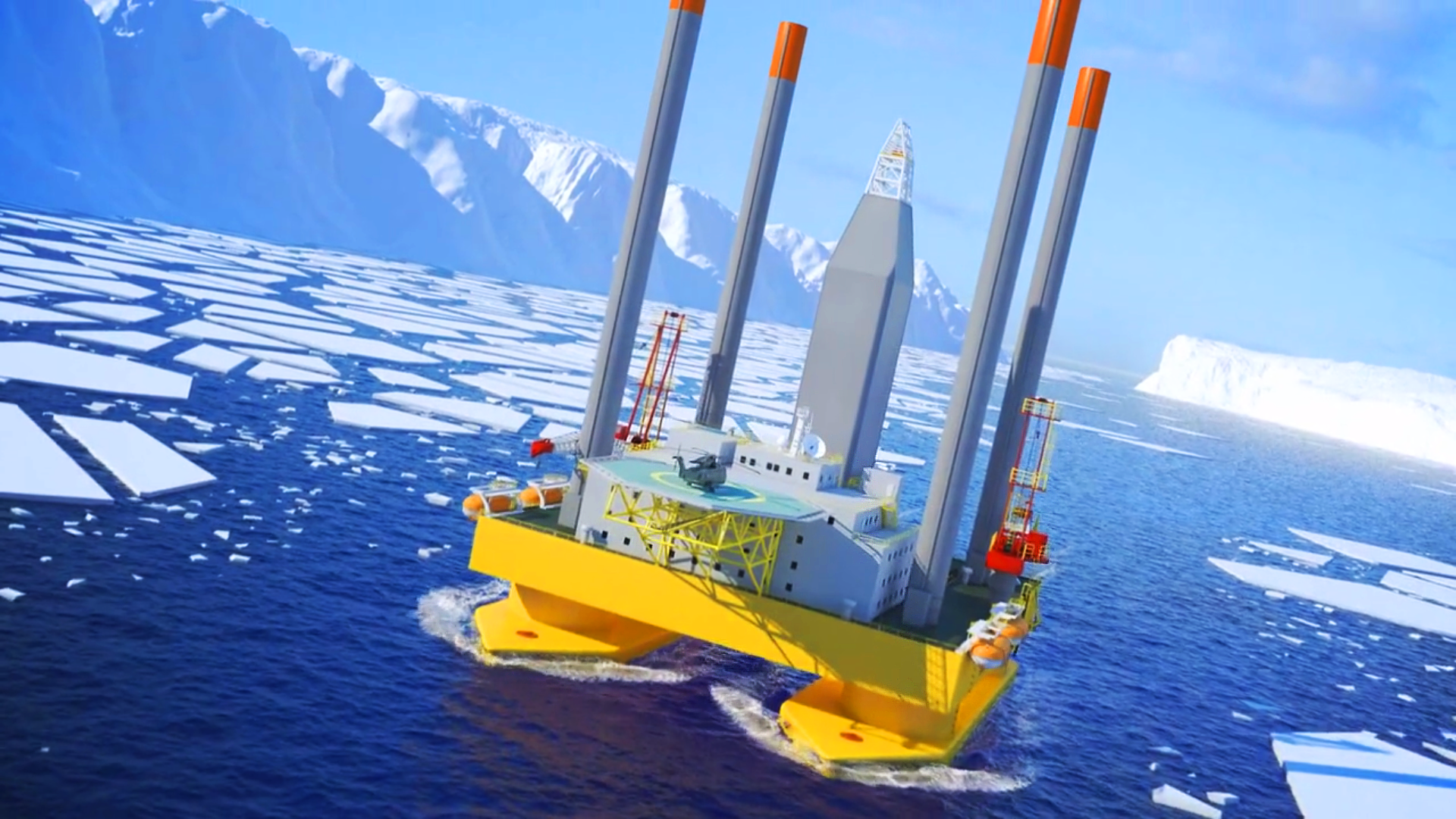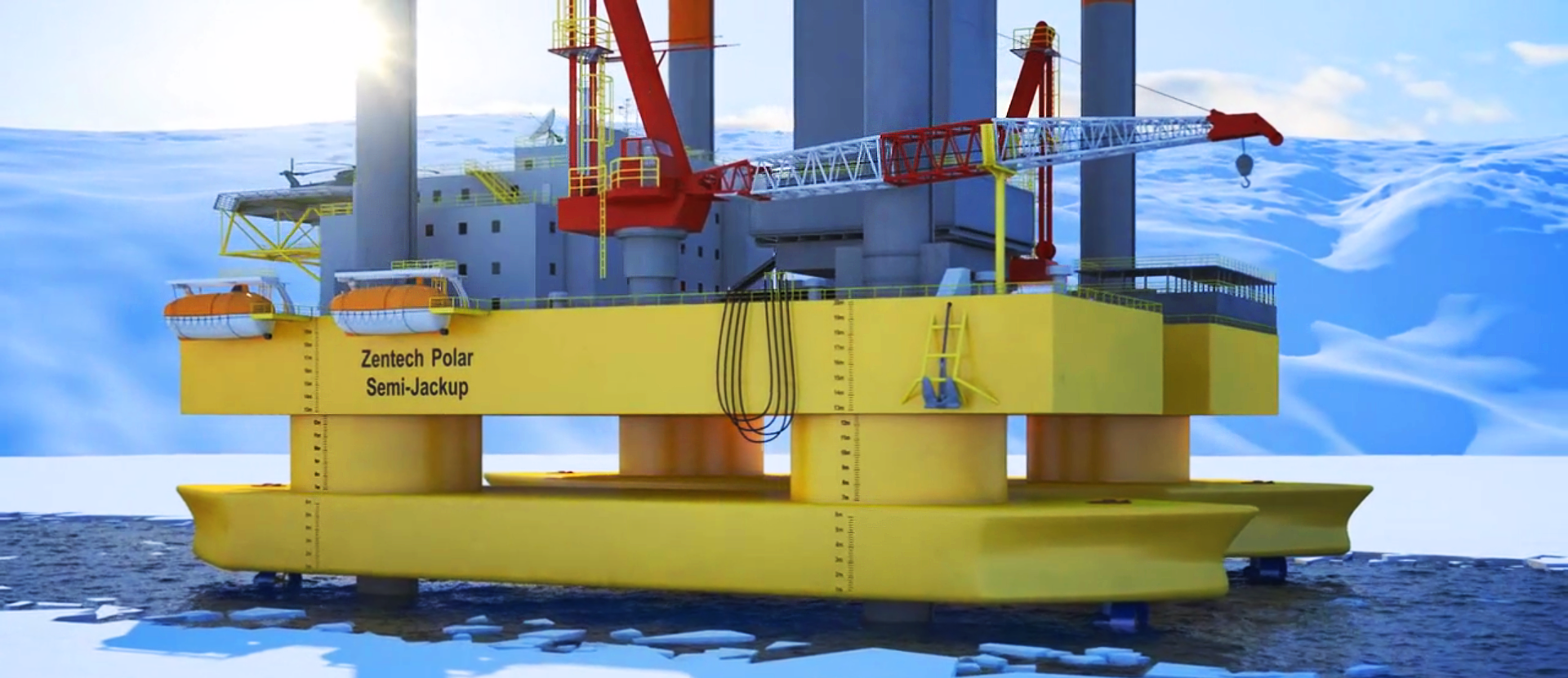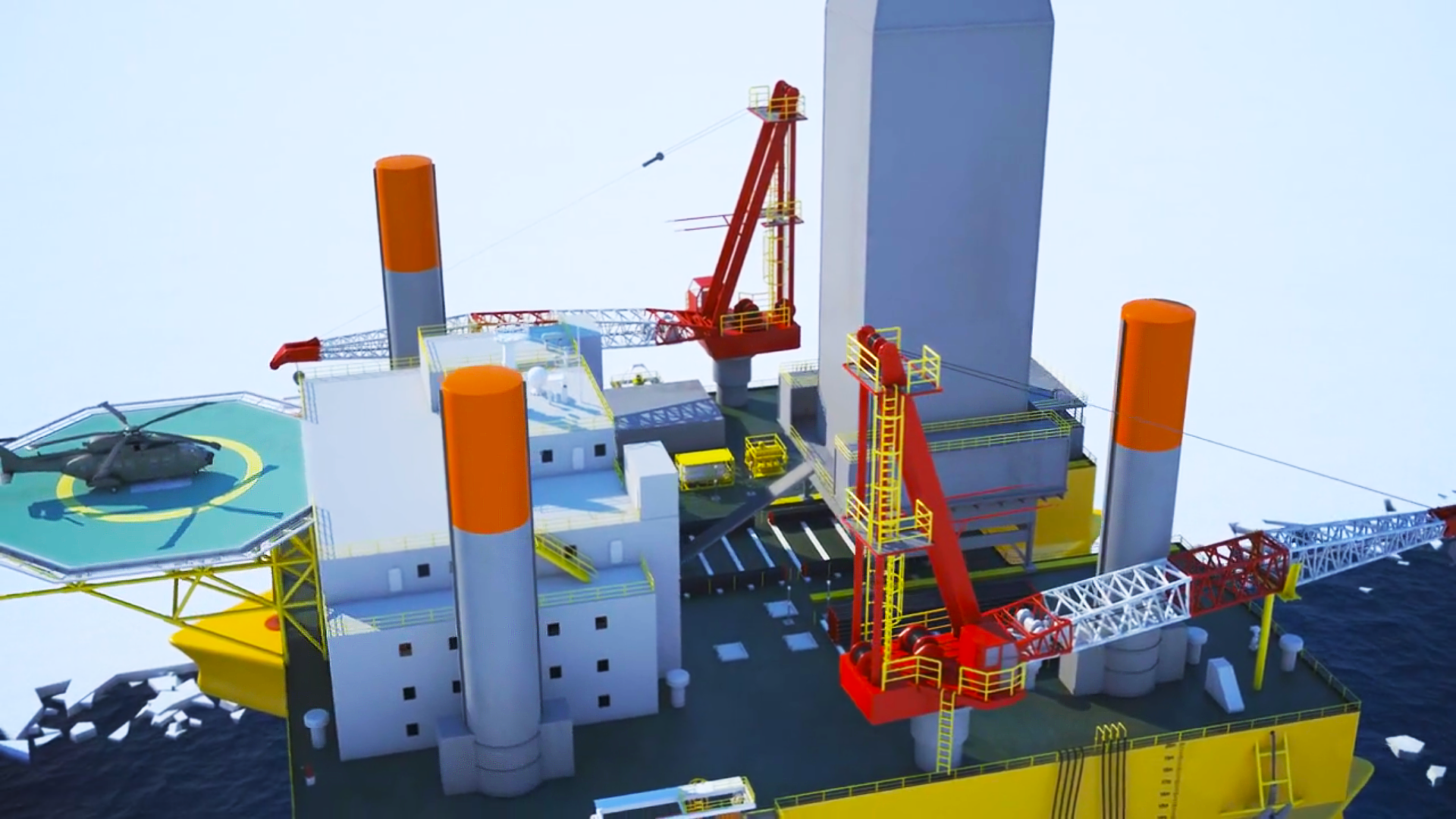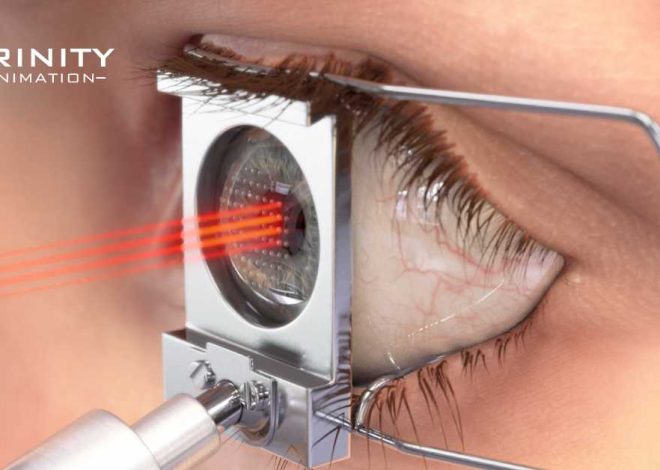
Zentech Arctic Oil Rig Animation- Offshore Technology

Trinity has the ability to develop high-quality animations that demonstrate offshore technology. For this oil drilling rig animation, the Zentech Semi-Submersible Jackup Drilling Rig, specifically designed for polar water, is presented. Trinity’s artists have recreated an accurately detailed 3D model of the oil rig and clearly demonstrates the movements it goes through during the drilling operations. Through 3D animation, the oil rig is displayed at a variety of different angles that would be complicated to obtain with live footage. The arctic environment is also realistically rendered through 3D software.
The first thing this animation covers is the different parts of the oil rig. The oil rig is displayed from a bird’s eye view surrounded by water and glaciers – moving through a gap of the ice in the water. The camera advances toward the oil rig until it displays a frontal view. It floats on two pontoons during transit which have icebreaking capabilities that allow the oil rig to travel through the polar waters. The camera then begins to rotate around the oil rig providing viewers with a 180 degree view. The upper hull supports all of the equipment and the accommodations module required for performing the drilling operations under harsh polar weather conditions. During transit, the vessel is powered by thrusters which are also displayed on the upper hull.

The oil drilling rig animation then demonstrates how the rig performs its job. As the rig approaches the drilling location, the legs are lowered to the sea floor which serve as an anchor holding it in place. Then, the rig is elevated on all four legs penetrating the seabed until a five-foot air gap between the pontoon and the water is achieved. The next step is preloading, which is accomplished by loading each fair diagonally – opposite legs. This reduces preloading time and ensures that the rig remains level. When the rig is elevated to its operating air gap, the drilling module is then moved over the slot and ready for drilling operations. Once the rig is jacked up on location it performs the drilling as a conventional oil rig would, however, this one is ideally suited to withstand the harsh polar weathers.
After the completion of the drilling, the drilling module is displayed adjusting back to the center of the rig and the hull is jacked down until the pontoons reach the water. The legs are then raised from the seabed to the position in which they began allowing the oil rig to float again for transit.
Every image here is completely synthetic — 3D modeled and rendered by Trinity’s artists on computers. To create this oil drilling rig animation, Trinity artists are provided with photographs and diagrams to develop an accurate 3D model from scratch. Movements are executed precisely accompanied by the clearly spoken narration also recorded by Trinity Animation. Trinity artists are able to communicate this rather complicated process in an understandable way – providing accurate imagery that is difficult to obtain.
Importance of Arctic Exploration
According to the U.S. Energy Information Administration, the U.S. U.S. consumes about 27 trillion cubic feet of natural gas per year.
In 2008, the United States Geological Survey reported that the area north of the Arctic Circle has an estimated 90 billion barrels of undiscovered, technically recoverable oil, 1,670 trillion cubic feet of technically recoverable natural gas, and 44 billion barrels of technically recoverable natural gas liquids in 25 geologically defined areas thought to have potential for petroleum.The U.S. Geological Survey assessment released in 2008the first publicly available petroleum resource estimate of the entire area north of the Arctic Circle. These resources account for 22 per cent of the undiscovered, technically recoverable resources in the world. The Arctic accounts for about 13 percent of the undiscovered oil, 30 percent of the undiscovered natural gas, 20 percent of the undiscovered natural gas liquids in the world. About 84 percent of the estimated resources are expected to occur offshore.









